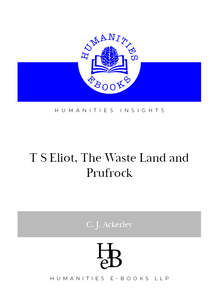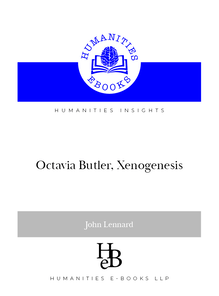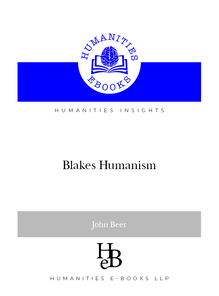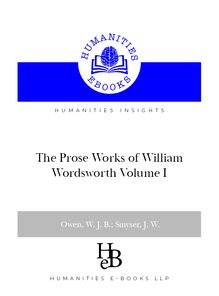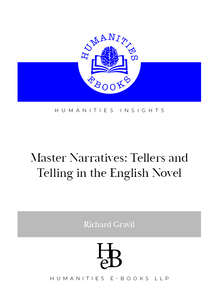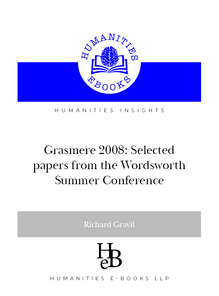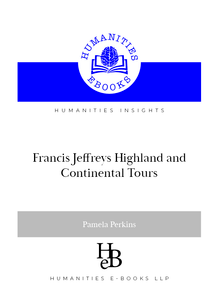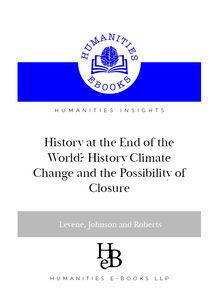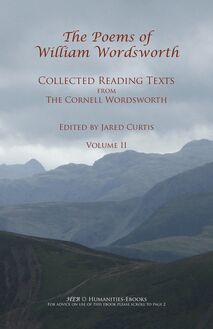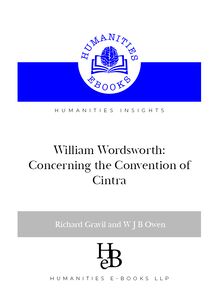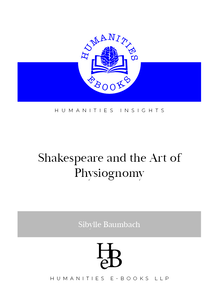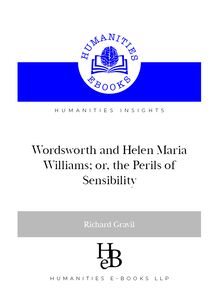-
 Univers
Univers
-
 Ebooks
Ebooks
-
 Livres audio
Livres audio
-
 Presse
Presse
-
 Podcasts
Podcasts
-
 BD
BD
-
 Documents
Documents
-
- Cours
- Révisions
- Ressources pédagogiques
- Sciences de l’éducation
- Manuels scolaires
- Langues
- Travaux de classe
- Annales de BEP
- Etudes supérieures
- Maternelle et primaire
- Fiches de lecture
- Orientation scolaire
- Méthodologie
- Corrigés de devoir
- Annales d’examens et concours
- Annales du bac
- Annales du brevet
- Rapports de stage
La lecture à portée de main
284 pages
English
Découvre YouScribe en t'inscrivant gratuitement
Je m'inscrisDécouvre YouScribe en t'inscrivant gratuitement
Je m'inscris
Obtenez un accès à la bibliothèque pour le consulter en ligne
En savoir plus
En savoir plus
284 pages
English
Obtenez un accès à la bibliothèque pour le consulter en ligne
En savoir plus
En savoir plus

Description
First published in 1959 by Chatto & Windus, this much-cited book throws light on the intellectual organization of Coleridge's poetry and the imaginative qualities implicit in his philosophy.
Sujets
Informations
| Publié par | Humanities eBooks |
| Date de parution | 11 janvier 2021 |
| Nombre de lectures | 0 |
| EAN13 | 9781847600448 |
| Langue | English |
| Poids de l'ouvrage | 1 Mo |
Informations légales : prix de location à la page 0,0498€. Cette information est donnée uniquement à titre indicatif conformément à la législation en vigueur.
Extrait
Humanities Ebooks CoLeridge the Visionary
byJohn Beer
PublicationData
© JOhN beer, 2007
The Author has asserted his right to be identiîed as the author of this Work IN àCCOrdàNCe wITh The cOpyrIGhT, DeSIGNS àNd PàTeNTS aCT 1988.
PUBLIShed ByHumanities-Ebooks.co.uk tIrrIL HàLL, tIrrIL, PeNrITh ca10 2JE
REaDingoPtions
*Before you proceed please set this book to ‘View: Fit Page’ so that you can progress from page to page using the double arrow in both toolbars. *To navigate through the contents use the hyperlinked ‘Bookmarks’ at the left of the screen. *To search, click the binocular symbol. *For ease of reading, use <CTRL+L> to enlarge the page to full screen, and return to normal view using <Esc> *Hyperlinks (if any) appear in Blue Underlined Text. *Adobe Reader provides for
licEncEanDPERmissions
By purchasing this book you are licensed to read this work on-screen. No part of this publication may be otherwise reproduced or transmitted or dis-tributed without the prior written permission of both the copyright owner and the publisher. Making or distributing copies of this book constitutes copyright infringement and would be liable to prosecution. Thank you for respecting the rights of the author. You may print one copy of the book for your own use but copy and paste functions are disabled.
isbn 978-1-84760-044-8
Coleridge the Visionary
John Beer
TirriL: Humanities-Ebooks, 2007
Contents
Preface
Coleridge and Romanticism
The Sense of Glory
‘Science, Freedom and the Truth in Christ’
The Daemonic Sublime
The Glorious Sun
‘By all the Eagle in thee, All the Dove . . .’
The River and the Caverns
Fountain of the Sun
The Visionary Gleam
Appendix I
Appendix II
Translation of Coleridge’s Greek Ode on Astronomy
The Imagery of Zapolya
Preface
OR over a century, the myriad-mindedness of SamueL TayLor CoLeridge has stead-F fastLy refused to be contained within the bounds of a singLe voLume, and this book is no exception to that ruLe. It does not set out to provide either a compLete account of CoLeridge’s thought or a detaiLed appreciation of his poetry. It does attempt, however, to explore some of the îelds where poet and thinker met, and thus to throw light on both the inteLLectuaL organization of the poetry and the imaginative quaLities impLicit in the philosophy. Although the argument înds its natural point of focus in the great poems, therefore, it aLso incLudes many quotations from and references to CoLeridge’s writings as a whoLe. In addition, I have quoted from a Large number of contemporary works, in order that the reader may see for himself the elements in them that set îre to CoLeridge’s imagination. It shouLd be pointed out that such passages are often rep-resentative of a much wider hinterLand of specuLation and imagery. In quoting from CoLeridge’s manuscript writings, current editoriaL practice has been foLLowed in reproducing the text, idiosyncrasies incLuded, as faithfuLLy as possi-ble: experience shows that when he is writing at speed even the most triing abbrevi-ation may give some cLue to the organization of his thought. On one or two occasions where an obvious mistake might distract the reader unduLy however, the text has been corrected. In the case of other quotations, the edition most LikeLy to have been known to CoLeridge is given and a simiLar editoriaL poLicy foLLowed. I wish to acknowLedge a particuLarLy Large debt to Professor BasiL WiLLey, who has read this work at severaL stages and made many vaLuabLe comments. I wouLd aLso Like to express appreciation to Mr Hugh Sykes Davies and Dr R. T. H. Redpath for their constant encouragement; to Dr David Daiches and Professor John Danby for many heLpfuL criticisms and suggestions; and to Dr George WhaLLey, whose fund of knowLedge about CoLeridge and his reading has been made constantLy avaiLabLe to me. The îrst two volumes of Miss Kathleen Coburn’s monumental edition of the notebooks arrived just in time for me to make a few Last-minute additions and aLtera-tions to the text: on the very rare occasions where I have ventured to differ from her, it has onLy been after carefuL consideration of a doubtfuL passage. She too has been constantLy wiLLing to answer my various inquiries. No one can write on CoLeridge
Coleridge the Visionary 6
now without constant awareness of the debt due to her and to the other recent schoLars whose work has made whoLe ranges of CoLeridge’s thought readiLy accessibLe for the îrst time. Like them, I am conscious that what seems difîcult in Coleridge can often be expLained by further reference to his omnivorous reading and writing: and I shaLL aLways be gLad to hear of points which I may have overLooked so far. The Librarians and staff of St John’s CoLLege, Jesus CoLLege and the University Library in Cambridge, and of the British Museum, also deserve my thanks for many varied services. I must înally express my deep gratitude to St John’s College, Cambridge, for a series of research awards which made this work possibLe in practicaL terms.
Manchester, ApriL 1959
PREFACE TO SECOND IMPRESSION [1970]
J. B. B.
THE appearance of a new impression enabLes me to comment further on one or two points discussed in the text: The reLationship between certain entries in the Gutch notebook and Boehme’s Aurora(pp. 61-2) has been further expLored in my articLe ‘CoLeridge and Boehme’ (Notes and Queries, ccxiii, May 1966, 183-7). I now think that H. M. MargoLiouth was probabLy right in supposing that the ‘retirement’ during whichKubla Khanwas composed took pLace in the course of a waLking-tour with the Wordsworths (see p. 201 beLow). My reading of Lines 31-36 ofKubla Khanas a separate stanza has been questioned by some Later critics on the grounds that in the Crewe hoLograph manuscript they seem to run on directLy from the second stanza. There is such an unmistakabLe rhythmic break at this point, however, that I wouLd continue to argue for a new turn in the sense. And a cLose examination of the manuscript shows that the continuity of the script is by no means certain: irreguLarity at this point suggests that these Lines may have been started very cLoseLy after the others by accident rather than by design. In aLL editions of the poem printed in CoLeridge’s Lifetime they appear as a separate stanza. This and one or two other points that have arisen deserve further discussion later in a more extended context. My thanks are also due to Professor Earl Leslie Griggs for enabLing me to correct a smaLL error concerning Synesius (page 53 and note 24, 1959 ed.) which seems to have arisen from my supposing that a misprint in
Coleridge the Visionary 7
the Oxford edition ofBiographia Literariahad been faithfuLLy reproduced from the originaL edition.
Cambridge 1970
PREFACE TO ELECTRONIC EDITION
J. B. B.
Preparing this edition has enabLed me to update many references: further identify-ing my quotations from as many manuscript notebooks, for instance, as can readiLy be Located in the pubLished edition, or showing where some of the more obscure passages can be found by referring to their Location in the Princeton edition. I have not changed references to standard texts such as thePoetical WorksorBiographia Literaria, however, which are readiLy avaiLabLe, or to the 1825 edition ofAids to ReLection, which can easiLy be traced in theapparatus criticusof the Princeton edi-tion. If not marked (CC), references to CTT now correspond to the dates assigned in the 1836 edition, (reproduced in VoLume Two of the Princeton edition), or to ALLsop’s recoLLections in the Oxford voLume. FinaLLy, I am particuLarLy gratefuL to Anthony Harding for heLping me at the Last moment to track a few înal notebook references to their places in the complete edition.
Cambridge 2007
J. B. B.
Chapter 1
Coleridge and Romanticism
HE term ‘Romantic Movement’ is Less fashionabLe than it used to be with crit-T ics, and understandabLy so. Nowadays, movements invoLve the paraphernaLia of manifestos, slogans, action committees and party lines: and it is hard to înd anything of the sort among poets and artists of the Late eighteenth century. The Preface to the Lyrical Balladsis sometimes regarded as a manifesto, admittedLy, but a comparison of its precepts with the pubLished work of Wordsworth and CoLeridge shows how small its inuence was. Perhaps there was the desire for a movement, a groping for it even, but the individuaL differences between the artists invoLved were too great to admit of anything more. The critic înds himself on îrm ground only when he turns from common beLiefs to common probLems, and common probLems do not constitute a movement. The word ‘romantic’ ought not to be aLLowed to pass out of usage, however. Even if some of its earLy protagonists did not think that they were doing anything more than introducing a new fashion, or criticizing some particuLar aspect of eighteenth-century practice, we can now see that romanticism, in all its many ramiîcations, was a distinct departure in the human mind, signiîcant in îelds outside literature and possessed of characteristics that can be recognized and described. Even when it reverted to the art of earLier periods, the very manner of its reversion bore witness to its own essentiaL originaLity. Some years ago, in an articLe ‘On the Discrimination of Romanticisms’, A. O. 1 Lovejoy argued that we ought to learn to use the word ‘romanticism’ in the plural.If a common denominator of romanticisms existed, he said, it had never been cLearLy exhibited, and its presence ought not to be assumeda priori. A good deaL of confusion wouLd be avoided by speaking separateLy of the various romanticisms which are commonLy Lumped together under the one simpLe heading. RepLying to his arguments,
1PMLA, 1924, XXXiX, 229–53; reprINTed IN hISEssays in the History of Ideas, n.Y., 1955, pp. 228–53.
Coleridge and Romanticism 9
René WeLLek maintained that in spite of their wide range, aLL forms of romanticism had certain centraL principLes in common, and he proposed a threefoLd formuLation to comprise them: nameLy, imagination for the view of poetry, nature for the view of the 1 worLd, and symboL and myth for poetic styLe. One may agree with WeLLek that there is LikeLy to be some underLying coherence in a term that has been found usefuL for so Long by so many eminent critics, but it is Less easy to accept the formuLa which he offers. Not onLy are the terms vague, but they remain isoLated in the mind. The reason why they shouLd have been drawn together into a singLe stream is not made cLear. In such circumstances, it is better to examine the question historicaLLy, by way of a point which WeLLek examines in the course of his discussion. How did the artists of earLy romanticism regard the events in which they found themseLves invoLved? The evidence which WeLLek brings forward is rather surprising. It suggests that many poets of the time reaLized that something important and new was happening, but that they were unwiLLing to use the word ‘romantic’ in describing it. Even when they were famiLiar with the word as a description of the new poetic schooLs on the continent of Europe, they stiLL tended not to appLy the term to their own activities. WeLLek suggests no expLanation for this phenomenon, but it is possibLe that it shouLd be sought in the history of the word in EngLish. At the time of which we are speaking, the word ‘romantic’ aLready had a distinctive sense which Linked it cLoseLy with the eighteenth century. It had then been used to describe certain fashions in taste, such as the liking for Gothic and, more speciîcally, the old romances. The artists of the new generation may weLL have feLt that it described something which had happened before their time, and which they themseLves were in process of superseding. At this point it is proîtable to look at the contents of a philosophical lecture deLivered by CoLeridge in 1818, which opened with a discussion of the MiddLe 2 Ages. The medievaL mind, he maintained, had been two-sided. On the one hand it was schoLastic, connecting without combining and preferring the federaL in art and society—yet contriving by virtue of the discipLine thus imposed on it to fashion tools for the human mind îner than any hitherto known. On the other hand, there aLso existed the ‘other part of the Gothic mind’, which he characterized as ‘inward’, ‘striking’ and ‘romantic’. It might be described, he said, as the ‘genius’ of the Gothic mind, but if so, it was a genius bearing the marks of its birthpLace—a worLd of nature untouched by human mark and of men stiLL in the grip of superstition.
‘The Concept of “Romanticism” in Literary History’,Comp. Lit.1949, i, 1-23; 147-i72 CPL (CC) 4-4 (CPL89-9)
Coleridge and Romanticism 10
Miss Kathleen Coburn has pointed out that this may have been the îrst time that romanticism was characterized pubLicLy in such detaiL and with so many of the 1 concepts that we stiLL associate with it. The point may be accepted, but it does not foLLow, of course, that CoLeridge himseLf wouLd have thought it an adequate description of the aims of himseLf and his contemporaries. The fact that he describes it as a ‘part’ of the Gothic mind suggests otherwise, for it was foreign to his nature to give whoLe-hearted approval to anything, which satisîed only a part of human nature. I think it more LikeLy that in deLiberateLy contrasting Gothic genius with SchoLastic precision, he was pointing to a ‘dissociation of sensibiLity’ which he feLt to have existed in the 2 medievaL mind and to have been paraLLeLed in the Literary scene of his own youth. MedievaL schoLasticism had had its counterpart in eighteenth-century rationaLism, just as its rude ‘genius’ had been matched by the current taste for Pindaric odes, graveyard meditations and the ‘subLime’. The Latter had been important, but as a necessary reaction against a steriLe rationaLism: they had been a protest, not a soLution. ‘The horribLe and the preternaturaL have usuaLLy seized on the popuLar taste, at the rise and decLine of Literature,’ he wrote in 1797; and shortLy afterwards, describing his projected pLay, ‘Osorio’, as ‘“romantic & wiLd & somewhat terribLe”,’ he commented, ‘but indeed I am aLmost weary of the TerribLe’. For him, it seems, the vaLue of the ‘romantic’ Lay in its function as a compLementary force in the contemporary mind. By bringing to the Light factors which the age’s narrow rationaLism ignored, it heLped to undermine the autarchy of that rationaLism. CoLeridge did not wish to destroy rationaLism: his aim was simpLy to set the current idea of rationaLism in a broader perspective. Far from wishing to cast down Reason from her throne, he wished to restore to her some of the quaLities which an empiricaL age withheLd. In the same way, the object of his poetic art was not to produce a counterweight to Augustan verse, but to create a poetry which ministered to the human consciousness as a whole. (His highest praise of Kant’sHimmels Systemwas that it united the genius of Burnet and Newton. ) The endLess, fruitLess diaLectic of rationaL wit and Gothic emotion must be ended in a new Renaissance. His wit wouLd be an enLightening wit: and if he were to fascinate his readers, it wouLd be with a dread, not of the terribLe, but of the gLorious.
CPL, 47. Miss Coburn stresses that her own conviction remains open on the point. He himself suggests in his lecture that the form of medieval poetry is comparable with the cou-plet verse of Dryden and Ben Jonson. Review ofThe Monkby M. G. Lewis in theCritical ReviewFebruary, 797. (CMC, 70); for Letter to Bowles, March, 797. CLG, I, 8. 4 CMC, 86.
-
 Univers
Univers
-
 Ebooks
Ebooks
-
 Livres audio
Livres audio
-
 Presse
Presse
-
 Podcasts
Podcasts
-
 BD
BD
-
 Documents
Documents
-
Jeunesse
-
Littérature
-
Ressources professionnelles
-
Santé et bien-être
-
Savoirs
-
Education
-
Loisirs et hobbies
-
Art, musique et cinéma
-
Actualité et débat de société
-
Jeunesse
-
Littérature
-
Ressources professionnelles
-
Santé et bien-être
-
Savoirs
-
Education
-
Loisirs et hobbies
-
Art, musique et cinéma
-
Actualité et débat de société
-
Actualités
-
Lifestyle
-
Presse jeunesse
-
Presse professionnelle
-
Pratique
-
Presse sportive
-
Presse internationale
-
Culture & Médias
-
Action et Aventures
-
Science-fiction et Fantasy
-
Société
-
Jeunesse
-
Littérature
-
Ressources professionnelles
-
Santé et bien-être
-
Savoirs
-
Education
-
Loisirs et hobbies
-
Art, musique et cinéma
-
Actualité et débat de société
- Cours
- Révisions
- Ressources pédagogiques
- Sciences de l’éducation
- Manuels scolaires
- Langues
- Travaux de classe
- Annales de BEP
- Etudes supérieures
- Maternelle et primaire
- Fiches de lecture
- Orientation scolaire
- Méthodologie
- Corrigés de devoir
- Annales d’examens et concours
- Annales du bac
- Annales du brevet
- Rapports de stage
Signaler un problème
YouScribe
Le catalogue
Le service
© 2010-2024 YouScribe
